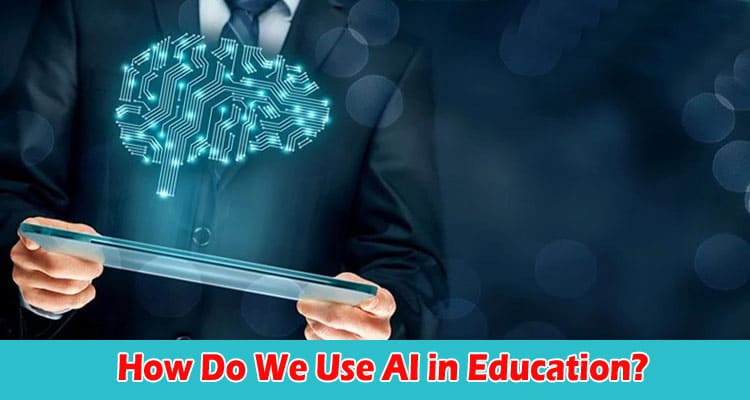Artificial Intelligence (AI) has transformed various sectors, with education being one of the most significantly impacted. AI’s integration into the educational sphere promises to enhance learning experiences, streamline administrative processes, and create more inclusive educational environments. Incorporating AI top tools can guide educators and administrators in choosing the right solutions that align with ethical standards and educational goals.
This article explores the myriad ways AI is being utilized in education, its benefits, challenges, and the ethical considerations it necessitates.
Personalized Learning Experiences
-
Adaptive Learning Systems
AI’s most notable impact on education is its ability to personalize learning experiences. Adaptive learning systems use AI algorithms to analyze students’ learning patterns, preferences, and performances. These systems adjust the educational content accordingly, offering a tailored learning journey for each student. For instance, platforms like DreamBox Learning use AI to adapt mathematics problems to suit a student’s proficiency level, ensuring they are easy enough.
-
Intelligent Tutoring Systems (ITS)
ITS is another innovative application of AI in education. These systems simulate one-on-one interaction between a student and a tutor. They provide real-time feedback, guidance, and personalized recommendations. Carnegie Mellon University’s Cognitive Tutor and the language-learning app Duolingo are examples of ITS that have significantly enhanced the learning process in complex subjects like mathematics and languages.
Augmenting Teacher Capabilities
-
Automated Grading Systems
AI-driven systems can automate the grading of various assessments, particularly those with objective answers like quizzes and multiple-choice tests. This automation saves time and allows educators to focus on more subjective and qualitative aspects of teaching and learning. Platforms like Turnitin and Gradescope use AI to grade written responses and assignments, providing detailed analytics on student performance.
-
Predictive Analytics
AI-driven predictive analytics are being employed in educational settings to improve student outcomes. These systems analyze data on student performance and engagement to identify students who might need additional support or are at risk of dropping out. This proactive approach enables timely intervention by educators and administrators.
Streamlining Administrative Tasks
-
Administrative Automation
AI has significantly reduced the administrative burden on educational institutions through automation. AI-powered chatbots can handle routine inquiries and processes, such as admissions and scheduling, with efficiency and accuracy. Georgia Tech’s AI teaching assistant, Jill Watson, is a prime example, assisting students and faculty by answering frequently asked questions.
-
Resource Optimization
AI is also used for optimizing resource allocation in educational institutions. By analyzing trends in course enrollment and student preferences, AI can assist in efficient course scheduling, faculty allocation, and managing physical and digital resources.
Enhancing Educational Content and Methodologies
-
AI in Curriculum Development
AI can aid in curriculum development by analyzing current trends, student needs, and future job market requirements. This ensures that educational content remains relevant and up-to-date.
-
Virtual and Augmented Reality (VR/AR)
VR and AR, powered by AI, offer immersive learning experiences that were previously impossible. These technologies can simulate real-life scenarios, making learning more interactive and engaging, particularly in medicine, engineering, and history.
Challenges and Ethical Considerations
Despite the numerous advantages, integrating AI into education is not without its challenges and ethical considerations.
-
Data Privacy and Security
As AI systems rely heavily on data, ensuring the privacy and security of student information is crucial. To secure student data, educational institutions must follow stringent data protection rules and ethics.
-
Bias and Fairness
AI systems can inadvertently perpetuate biases if they are trained on biased data sets. Ensuring that AI algorithms are fair and unbiased is essential, especially in areas like automated grading and student evaluations.
-
Digital Divide
The disparity in access to technology, known as the digital divide, can lead to unequal educational opportunities. It’s vital to address this issue to ensure that AI in education benefits all students, regardless of their socio-economic background.
-
Teacher and Student Adaptation
Integrating AI into education requires significant changes in teaching methodologies and student learning habits. Adequate training and support for teachers and students are imperative for a smooth transition.
Conclusion
AI’s role in education is transformative, offering personalized learning, enhancing teacher effectiveness, and streamlining administrative processes. However, realizing its full potential requires carefully navigating the associated challenges and ethical issues.
Balancing technological advancement with considerations like data privacy, bias, and access equity is critical. As AI continues to evolve, its integration into education promises a future of more accessible, efficient, and customized learning experiences, provided we remain mindful of the responsibilities it brings.







